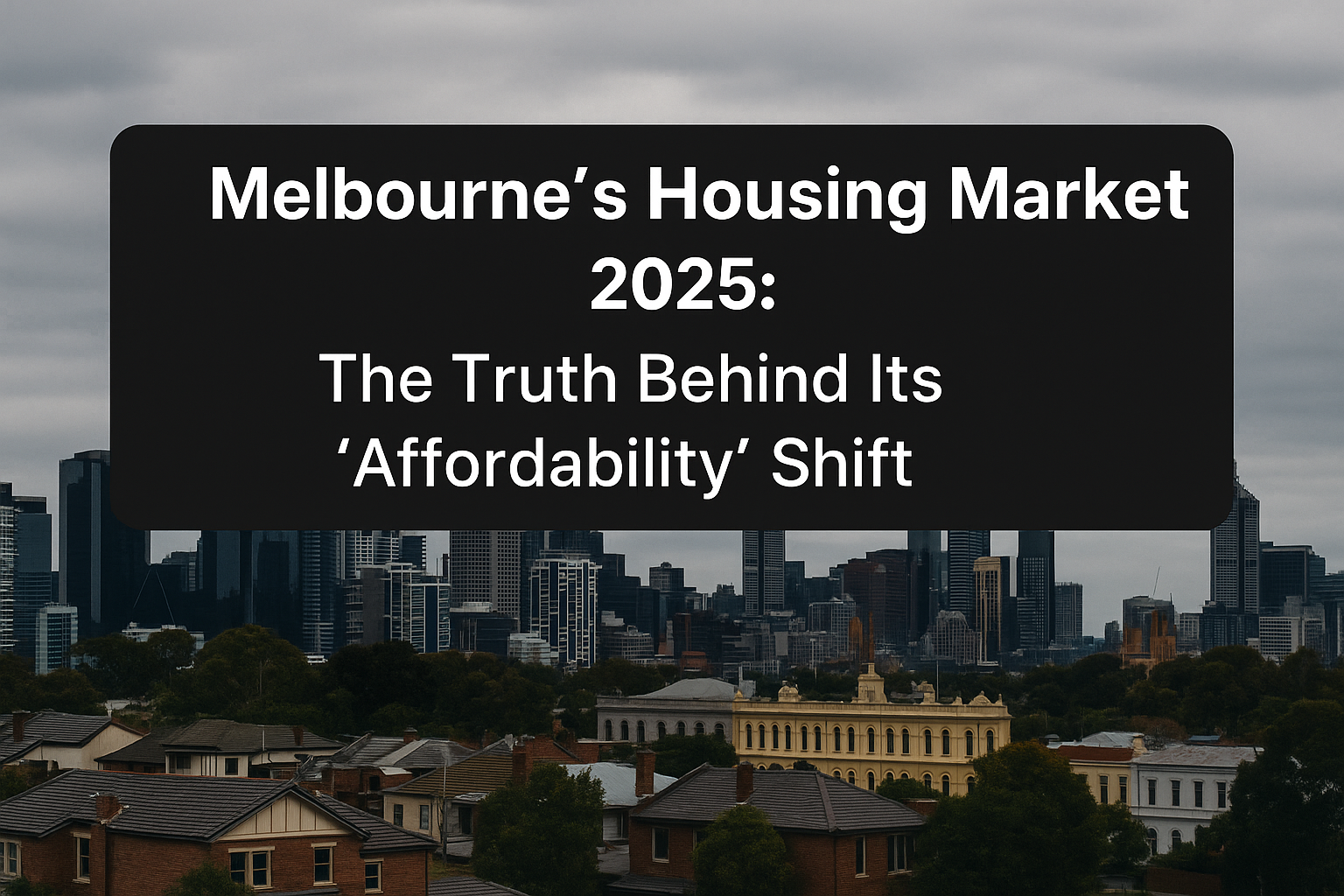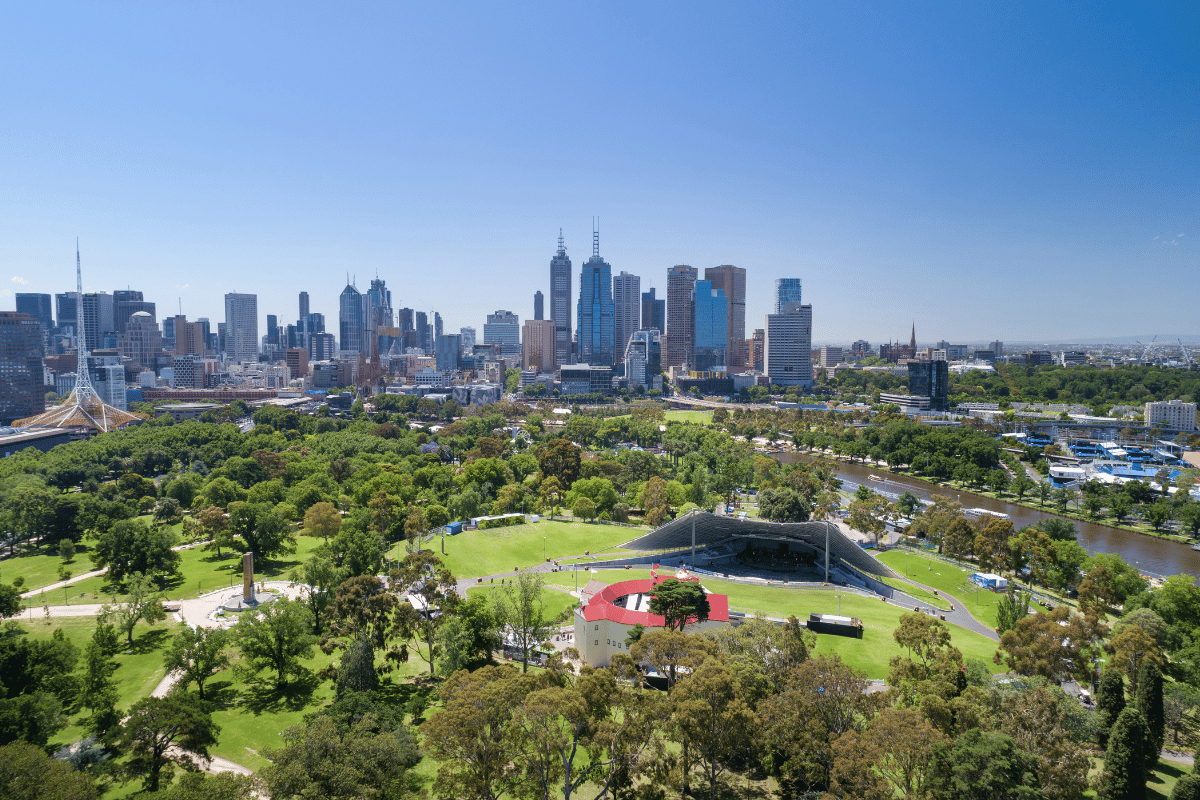Melbourne
Melbourne’s “Affordable Housing” Story Isn’t What It Seems — It’s an Investor Retreat and Rental Paradox in Disguise
Melbourne, once Australia’s housing powerhouse, is being described in 2025 as affordable — a term that would have seemed laughable only a few years ago. After decades of price acceleration, the city has slipped behind Brisbane, Perth, and even Canberra in property cost rankings. For first-home buyers, this sounds like good news. But Melbourne’s new affordability is not the result of sudden generosity in the market.
Instead, it’s a fragile equilibrium built on investor retreat, weak rent growth, and rising mortgage stress. What’s unfolding in Melbourne isn’t a housing “correction” so much as a structural transformation — one that reveals the changing economics of home ownership in Australia’s most complex city.
Prices Have Cooled — but the Calm Is Uneven
The latest CoreLogic and NAB Property Market Insights (September 2025) show Melbourne’s median house value at about A$953,000, and unit values averaging around A$629,000, with all dwellings averaging A$806,000. These figures place Melbourne comfortably below Sydney’s median of over A$1.2 million, making it one of the more accessible capital markets in Australia.
Yet this softening has little to do with a construction boom or wage growth. CoreLogic’s October 2025 Housing Chart Pack describes Melbourne as “the most subdued of the major capitals,” with growth rates below national averages and turnover largely flat. Prices have not collapsed — they’ve plateaued. The city has moved from being defined by momentum to being defined by hesitation.
Melbourne’s cooling, in other words, reflects a loss of speculative demand rather than a surge in supply.
Victoria’s Policy Reset and the Investor Exodus
Much of Melbourne’s current housing behaviour can be traced back to Victoria’s assertive property policy reforms introduced between 2023 and 2025. Aimed at cooling speculative activity and addressing the chronic rental shortage, these measures have reshaped the investment landscape more profoundly than any interest-rate change could.
According to the Victorian Department of Treasury and Finance, the state implemented a 7.5% Short-Stay Levy (effective from January 2025) on Airbnb-style rentals, alongside higher land tax rates for multiple-property owners. Local councils and owners’ corporations were also granted expanded powers to restrict or limit short-term rentals in high-density apartment complexes.
While designed to improve housing access, these reforms have also altered investor behaviour dramatically. Reporting by The Guardian (October 2025) shows that Victoria’s rental housing stock fell by more than 24,000 dwellings in the 12 months to early 2025 — a contraction of around 3.6%. Many landlords either sold into the owner-occupier market or shifted properties into the short-stay sector to avoid higher costs.
The latest Australian Bureau of Statistics (ABS) Lending Indicators release (June Quarter 2025, published 13 August 2025) supports this picture of a cooling investment environment. Nationally, the ABS reported that the value of new investor loan commitments for housing rose just 1.4% in the quarter, indicating only a modest recovery after several slower months of lending activity. Though the data is national, industry analysts note that Victoria’s investor demand has lagged behind the more bullish trends seen in Queensland and Western Australia, where rental yields remain higher and policy settings are less restrictive.
In short, Victoria’s policy reset has succeeded in taking the heat out of investor demand, but at the cost of tightening the rental supply. Melbourne’s housing market appears calmer — even “affordable” — not because more homes are being built, but because fewer investors are competing to buy them.
The Rental Paradox: Fewer Homes, Yet Flat Rents
Ordinarily, fewer rental homes should drive rents up sharply. But Melbourne has confounded that expectation.
According to NAB’s September 2025 Property Market Insights, house rents rose by just 1.2% over the previous year, and unit rents by 1.8% — both the weakest increases among Australia’s major capitals. By comparison, rents in Brisbane grew at more than double those rates.
This flatlining rent growth, despite shrinking rental supply, reveals a paradox. Many renters are already stretched to their financial limits, unable to absorb further increases amid broader cost-of-living pressures. Landlords, constrained by this affordability ceiling, are raising rents cautiously or leaving properties vacant.
Victoria’s Rental Report (March 2025) puts the median weekly rent across metropolitan Melbourne at A$585, up only slightly from 2024. The government data suggests that while tenants have avoided further spikes, the underlying shortage remains unresolved.
The combination of stagnant rents and reduced rental stock signals a market at an impasse: investors are exiting, tenants are maxed out, and new supply has yet to fill the gap.
Mortgage Stress Is Quietly Rising
While the rental market treads water, the pressure is building elsewhere — in the suburbs where most new homeowners live. According to Moody’s Analytics, Melbourne now records the highest mortgage arrears rate in Australia, with 2.1–2.3% of loans more than 30 days overdue, compared with a national average of around 1.4%.
As reported by The Nightly in August 2025, the worst-affected areas are the outer growth corridors of Wyndham, Melton, and Casey, where households bought during the pandemic property boom and are now struggling with higher interest rates. The arrears data underscores how fragile Melbourne’s affordability really is — the city’s prices may have cooled, but its debt burdens have not.
This divergence — between price stability and financial strain — highlights the delicate balance of Melbourne’s current housing cycle. The affordability gains are, for many, offset by the reality of stretched household budgets.
A Structural Shift, Not Just Another Cycle
What sets Melbourne apart from the rest of the nation is that its slowdown is not merely cyclical — it’s structural.
Brisbane and Perth are benefiting from renewed population growth, mining-driven investment, and migration inflows. Melbourne, meanwhile, is transitioning into a post-speculation era. Over the past decade, the city has averaged roughly 55,000 new dwellings built annually, according to The Guardian’s October 2025 analysis. That steady supply, combined with policy-driven investor fatigue and subdued income growth, has flattened price trajectories.
CoreLogic’s latest figures show Melbourne’s housing values rising at the slowest pace among all capitals. The market’s new identity is one of balance rather than boom — a sharp contrast to its frenzied past.
What This Means for the Broader Economy
This structural moderation carries both risks and benefits. On the one hand, a less speculative housing market can support long-term stability, helping first-home buyers re-enter the system and reducing volatility. On the other, weaker price growth dampens household wealth effects, which can slow retail and service-sector spending.
The changing ownership profile also matters. With investors stepping back, owner-occupiers now dominate new purchases, according to CoreLogic’s Q3 2025 lending data. Owner-occupiers typically maintain and improve their homes more actively than short-term investors, creating ripple effects across trades, maintenance, and household services.
However, rising mortgage stress in the outer suburbs suggests a two-speed economy within the same city: inner and middle-ring areas remain resilient, while outer-ring households face tightening budgets. The city’s affordability, therefore, may be real on paper but fragile in practice.
A Fragile Reset in Motion
Melbourne’s 2025 housing landscape is neither collapsing nor surging — it’s stabilising after years of volatility. Prices have cooled, investors have withdrawn, and policy settings have redefined how housing operates in the state. Yet, the foundation of this stability remains delicate.
The investor retreat has achieved its immediate aim: curbing rapid price escalation. The flat rental market offers temporary breathing room for tenants. And the policy reset has shown that government intervention can shift market dynamics. But beneath this apparent calm lies tension — between affordability and economic strain, between stable prices and vulnerable households.
Whether Melbourne’s housing market can sustain this balance depends on the next 12 to 18 months: interest-rate trajectories, population growth, and wage recovery will all determine whether this reset becomes a lasting equilibrium or another short-lived pause before renewed pressure.
What’s clear is that Melbourne’s so-called affordability story is not a fairytale. It’s the result of a structural recalibration — one that may redefine the city’s housing identity for the next decade.
Conclusion
Melbourne’s 2025 housing story is not one of crisis or celebration, but of quiet transformation. The city is shifting from a speculation-driven property economy to one defined by restraint, regulation, and readjustment. Its apparent affordability masks deeper tensions — between policy ambition and market behaviour, between stability and stagnation. Yet within this reset lies an opportunity: a chance for Melbourne to redefine what sustainable housing looks like in a modern city. If policymakers can balance accessibility with investment confidence, and if households can recover from financial strain without another boom, Melbourne may emerge from this phase stronger — more stable, more equitable, and finally, more liveable for those who call it home.
Hi, I’m Ankush. Based in Port Lincoln, South Australia, I hold a Bachelor of Science and a Bachelor of Education (Middle & Secondary) from the University of South Australia, graduating in 2008. With several years of experience as a high school and secondary teacher, I’ve combined my passion for technology and finance to drive innovation in the on-demand service industry. As the founder of Orderoo, I’m committed to leveraging technology to simplify everyday tasks and enhance accessibility to essential services across Australia. My focus remains on exploring new opportunities to expand and improve these solutions, ensuring they meet the evolving needs of users and service providers alike.

























